The Cannabinoids Handbook: Everything You Need To Know
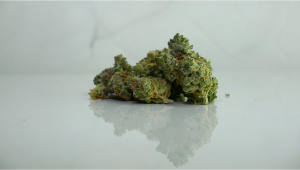
- 1. What are cannabinoids and where are they produced?
- 2. Cbga and cbgv: where it all starts
- 3. Thca and thcva
- 4. Cbda and cbdva
- 5. Cbca
- 6. Thc
- 7. Cbd
- 8. Cbc
- 9. Cbg
- 10. Cbn
- 11. Thcv
- 12. In conclusion
When we're new to the world of marijuana, there can be quite a couple of new things we must learn. For example, being able to identify the characteristics between each strain, what is the difference between Indica and Sativa strains, and many more.
However, the first thing you'll probably want to learn about is the cannabinoid family. We hear them all the time, terms such as THC and CBD. they're the two most famous cannabinoids in marijuana, but still, there are a lot more cannabinoids than just these two.
Learning the essentials about these different cannabinoids can give you a better perspective on the effects produced by the consumption of these compounds, allowing you to make the most out of your consumption experience. The more you know the better!
Some of the most famous cannabinoids in the marijuana family include:
- THCA, THC and THCV;
- CBDA, CBD and CBDV;
- CBGA and CBG;
- CBCA and CBC;
- And CBN.
Let's go through the main characteristics of the major compounds in the cannabis family.
1. What Are Cannabinoids and Where Are They Produced?
Before we get into the different types of cannabinoids that make the weed family, perhaps it's a good idea to explain what cannabinoids are and where they are produced first.
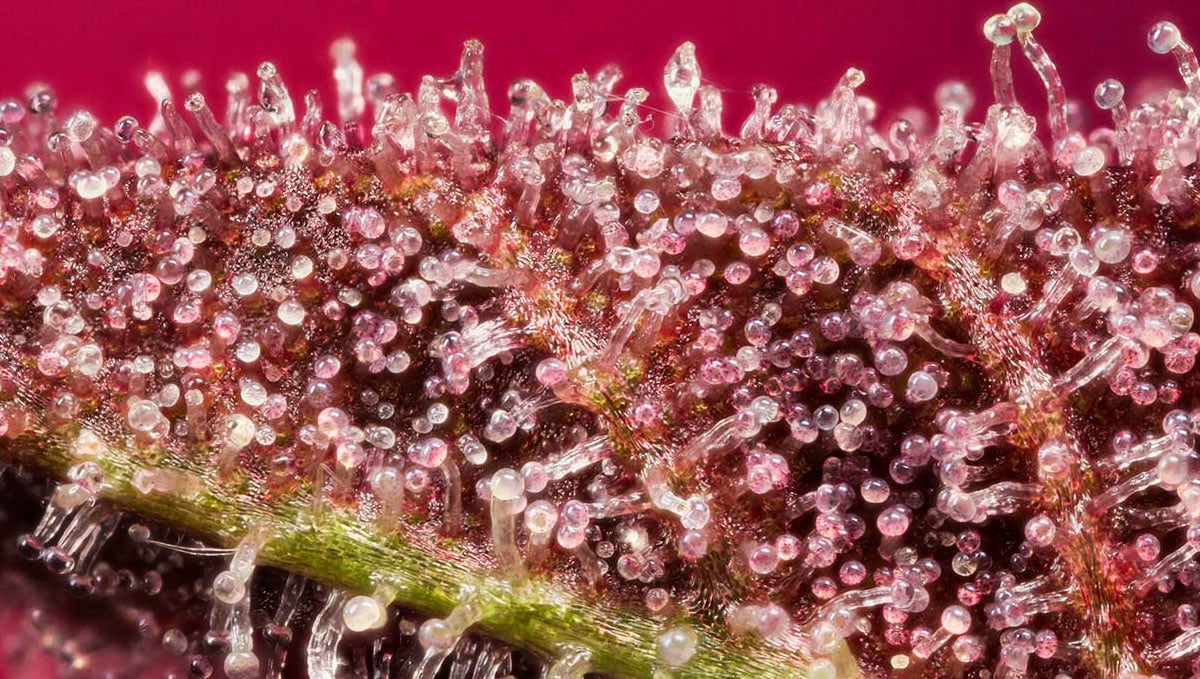
Cannabinoids are compounds produced in cannabis plants that bind with the receptors present in our bodies' endocannabinoid system to provide several benefits and effects.
The production of cannabinoids takes place in the trichomes of cannabis plants, trichomes being those shiny mushroom or lollipop-shaped glands present in the plants, mainly in the buds, where a big part of the essential compounds of marijuana, or at least the ones we care about most, are produced.
You might have bumped into astounding macro photos of weed buds, like the one above. Well, right there, the shiny thingies you're able to see are the trichomes.
2. CBGA and CBGV: Where It All Starts
When a cannabis plant starts to grow, the first form of cannabinoids we'll find in its composition is the one of CBGA, or cannabigerolic acid, the precursor to CBG. In fact, CBGA could be considered as the grandfather in the marijuana genealogic tree. This is because it is the first one to be produced, and it is through the different processes of transformation, known as synthases, that the rest of the cannabinoids are born.
CBGA's properties include aiding in the relief of pain and inflammation. It may also help fight cardiovascular disease in diabetic patients and aid in the treatment of metabolic disorders and colon cancer. 1 2 3
3. THCA and THCVA
After the first transformation or synthase of CBGA, we obtain as a result THCA, also known as delta 9 THC or tetrahydrocannabinol acid, and THCVA, or tetrahydrocannabivarin acid.
Delta 9 THC is a result of CBGA transforming into this compound after having harvested and dried our weed buds. THCA is the raw form of THC, which means, that through another synthase, this cannabinoid will transform itself again, providing then newer effects, which we'll explain further ahead.
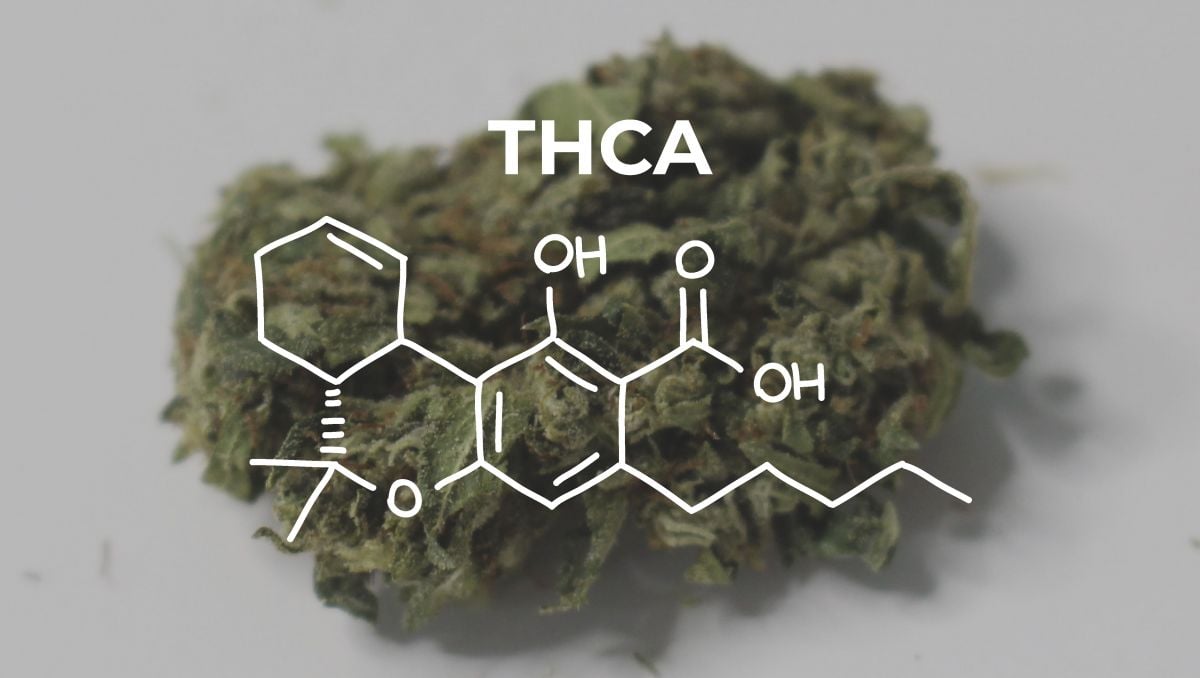
THCV, on the other hand, shares most of THC's structure but with fewer carbon atoms. Both THCA and THCVA aren't psychoactive by themselves, but they do come along with several health benefits.
THCA on its part stimulates the appetite, reduces inflammation, helps fight cancer, relieves pain, aids insomnia, slows damage in the nervous system, suppresses muscle spasms, and more. However, these cannabinoids are so mutable and unstable that their clinical applications are limited.
4. CBDA and CBDVA
Another result of the mutation of CBGA and CBGV is CBDA, or cannabidiolic acid, and CBDVA, or cannabidivarin. These, much like THCA and THCV, abound a lot in cannabis plants.
These two cannabinoids aren't psychoactive either, and they're the ones that after the decarboxylation process, which is the harvesting, drying, aging, and heating of the cannabinoids, turn into CBD.
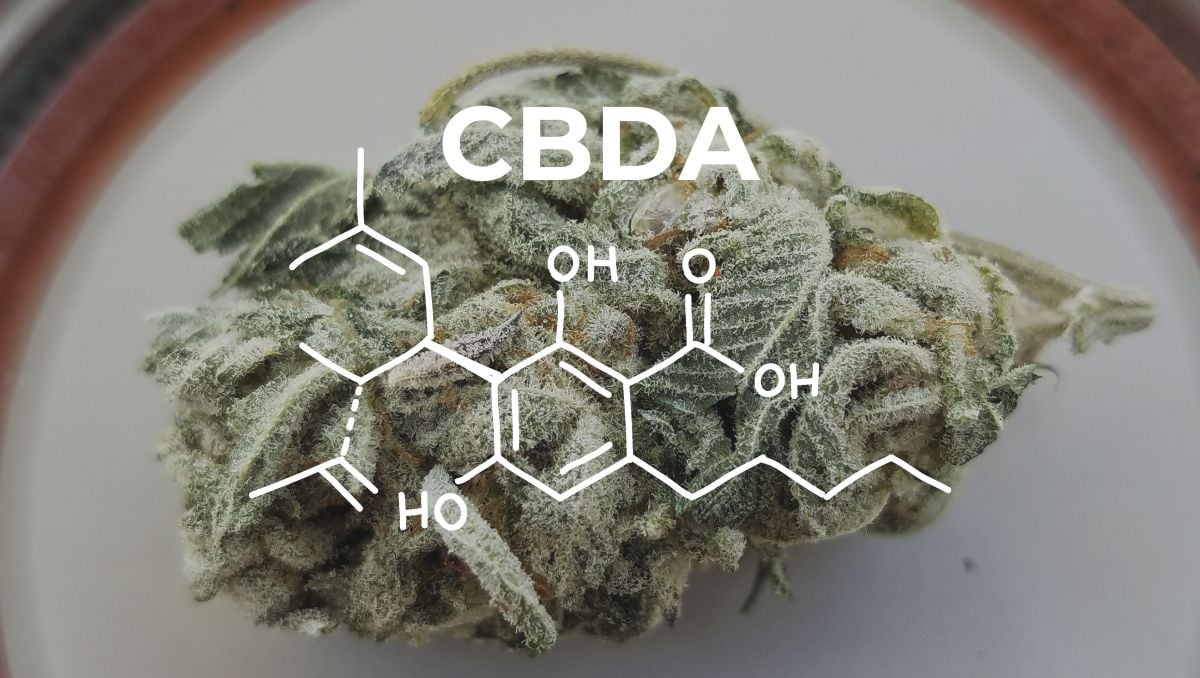
Some of the properties of CBDA and CBDVA include their capacity to relieve inflammation, reduce nausea and convulsions, and act as an anti-carcinogen.
5. CBCA
The last cannabinoid that comes as a result of the first synthases of CBGA is CBCA, or cannabichromene acid. It is the precursor to other famous cannabinoids, CBLA, or cannabicyclol acid, CBC, or cannabichromene, and CBCV, or cannabichromevarin.
When it comes to the properties of CBCA, it is normally used to treat fungal infections. However, no big studies have been led on the subject, so there is yet lots more to find about this cannabinoid.
6. THC
Once the cannabinoids listed above have all been put through the process of decarboxylation, being exposed to CO2, time, curing, and heat, we obtain the next set of cannabinoids in the weed family.
In the case of THCA, it turns into THC, or delta 9 tetrahydrocannabinol, one of the most, if not the most acclaimed cannabinoid in the family, the praised child. This is the one known for providing the psychoactive effects associated with the typical weed high, such as feeling giggly, with bloodshot red eyes, and the latter munchies effects.
Medical-wise, THC is often linked with several benefits, such as:
- Relieving pain;
- Easing anxiety and stress;
- Reduces the risk of nerve damage and eases pain caused by it;
- Prevents muscle spasms and convulsions;
- Improves poor sleeping schedules, and more.
People turn to THC for many diverse reasons, from simply wanting to get high, to improve their sports performance, or to use it as an alternative method of medicine. The use of this compound is constantly expanding due to the many pieces of research being led on the subject as cannabis is legalized in more and more countries around the world.
7. CBD
Here comes the other superstar cannabinoid, CBD, or cannabidiol. This is the product of CBDA and is the cannabinoid famously acclaimed in the medical field.
Unlike its brother THC, CBD doesn't provide any psychoactive effects at all. However, CBD is great for many medical purposes, such as relieving epilepsy in children and treating inflammatory diseases.
Some other amazing benefits provided by the consumption of CBD include:
- Relieving pain and inflammation;
- Easing anxiety, depression, and other mental disorders;
- Alleviating symptoms related to cancer;
- Reducing acne and working as an antibacterial;
- Treating neurological disorders;
- Improving heart health;
- Helping overcome addictions, and more.
The list could go on and on, so basically, CBD is a loyal, fully-packed cannabinoid, a total keeper.
8. CBC
Cannabichromene, CBC, as we've mentioned before, is the result of the decarboxylation of CBCA. This one is considered part of the major 6 cannabinoids in the weed family.
CBC isn't too good at binding with our CB1 receptors, but it does with pain-related ones, increasing the body's levels of natural endocannabinoids. CBC also works as an anti-inflammatory, an analgesic, it has shown to reduce acne and it can aid in the prevention of cancer.
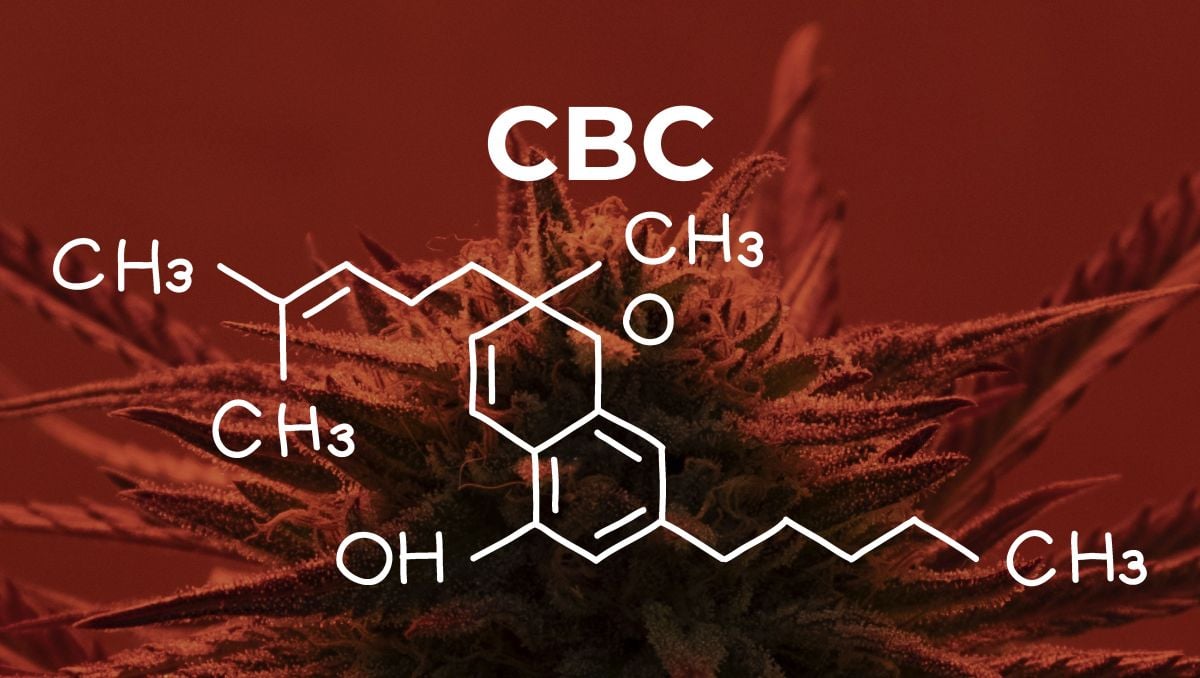
By combining it with other cannabinoids, like THC and CBD, CBC could provide antidepressant effects as well.
9. CBG
CBG or cannabigerol isn't considered a major cannabinoid because it isn't found in high amounts in the plant. However, it is a powerful treatment for glaucoma due to its high vasodilation effects.
Being a vasodilator means that CBG widens blood vessels, increasing blood flow and providing oxygen to the tissues. CBG is also a good antibacterial, anticancer and neuroprotectant.
10. CBN
CBN, or cannabinol is the cannabinoid often known as the sleepy cannabinoid. CBN is the result of the decarboxylation of THC, a.k.a. the exposure of this cannabinoid to oxygen, along with time and curing.
For this reason, if you want to keep your cannabis buds fresh, you should make sure they're properly stashed, or your THC will slowly turn into CBN.
CBN is known for providing amazing sedative effects, especially when combined with THC. It is also famous for its anti-asthmatic and anti-inflammatory properties, it boosts the appetite, and reduces seizures as well.
11. THCV
Lastly, THCV, or tetrahydrocannabivarin, offers a unique array of effects. In contrast to THC, THCV is an appetite suppressant, which can be used for consumers focused on weight loss. THCV may also help regulate blood sugar and reduce pain attacks. Research also suggests that THCV has neuroprotective properties, making it a potential therapeutic option for conditions such as Parkinson's disease. Furthermore, its anti-inflammatory effects can help in reducing inflammation-related pain and discomfort. However, most strains contain only trace amounts of THCV, so if you are looking for high-THCV strains, make sure to go for African Sativas.
So let's compare the different cannabinoids and their properties:
| Effect | THC | THCA | THCV | CBN | CBD | CBDA | CBC | CBCA | CBG | CBGA |
|---|---|---|---|---|---|---|---|---|---|---|
| Analgesic, pain relief | X | X | X | X | X | |||||
| Anti-inflammatory | X | X | X | X | X | X | X | |||
| Reduces appetite, anorectic | X | |||||||||
| Stimulates appetite | X | X | X | |||||||
| Reduces nausea and vomiting | X | X | ||||||||
| Anxiolytic, reduces stress | X | X | ||||||||
| Reduces seizures and convulsions, antiepileptic | X | X | X | X | ||||||
| Antispasmodic, reduces muscle spasms | X | X | X | |||||||
| Aids insomnia | X | X | ||||||||
| Neuroprotection | X | |||||||||
| Antibacterial and anti-fungal | X | X | X | X | ||||||
| Anti-cancer, anti-tumor | X | X | X | X | X |
12. In Conclusion
Who would have known that the cannabis family is so diverse? It is made of uncountable amounts of cannabinoids that each provide their own set of characteristics, just like every family member brings their own spice to the family's essence. Dive more into the world of cannabinoids and find all the ways in which you can use these compounds for your benefit! And don't forget to comment on what are your favorite cannabinoids and what uses you give them!
EXTERNAL REFERENCES
- "Inhibition of aldose reductase activity by Cannabis sativa chemotypes extracts with high content of cannabidiol or cannabigerol" Antonella Smeriglio, Salvatore V. Giofrè, Enza M. Galati, Maria T. Monforte, Nicola Cicero, Valeria D'Angelo, Gianpaolo Grassi, and Clara Circosta. June 2018.
- "Identification and characterization of phytocannabinoids as novel dual PPARα/γ agonists by a computational and in vitro experimental approach" Enrico D'Aniello, Tariq Fellous, Fabio Arturo Iannotti, Alessandra Gentile, Marco Allarà, Francesca Balestrieri, Roy Gray, Pietro Amodeo, Rosa Maria Vitale, and Vincenzo Di Marzo. March 2019.
- "Identification of Synergistic Interaction Between Cannabis-Derived Compounds for Cytotoxic Activity in Colorectal Cancer Cell Lines and Colon Polyps That Induces Apoptosis-Related Cell Death and Distinct Gene Expression" Rameshprabu Nallathambi, Moran Mazuz, Dvory Namdar, Michal Shik, Diana Namintzer, Ajjampura C. Vinayaka, Aurel Ion, Adi Faigenboim, Ahmad Nasser, Ido Laish, Fred M. Konikoff, and Hinanit Koltai. June 2018.










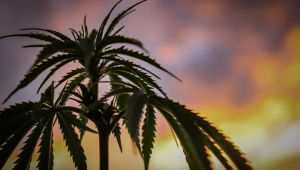


Comments